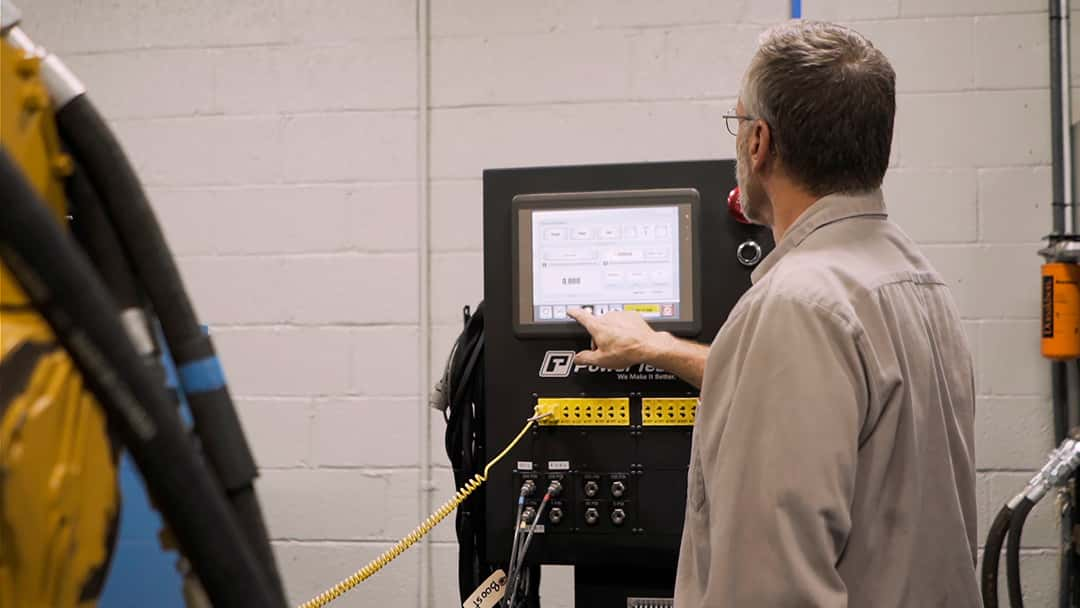5 Tips to Prolong the Life of Your Engine Dynamometer
The first step in preventing dynamometer downtime is to know what is needed for it to run at peak performance. Below are the Power Test Technical Service Department’s top recommendations for water brake engine dyno maintenance.
1. Conduct service at recommended intervals
The most productive dynamometer is only as good as its uptime. Reference your owner’s manual for guidance on preventative maintenance. Train key personnel on the use and maintenance of the equipment. And, utilize Power Test’s technical service staff for on-site support, evaluation, calibration, maintenance and repairs.
2. Water quality is critical
Water quality is one of the most important factors in the longevity of a dynamometer. Check out this Water Tech Tip for information on quality standards as well as bacteria and algae concerns.
3. Keep water temperatures cool
Dynamometers can use in excess of 100 gallons of water per minute. The cooler the water going into the dynamometer, the cooler the dynamometer will stay, and the more service hours it will deliver. Most of our customers who are running large capacity dynos recirculate the water instead of pulling from the city water supply for every use. Recirculated water should run through a cooling tower to reduce temperatures before it is sent through the dynamometer.
4. Match lubrication maintenance with run frequency
Power Test engine dynamometers have two different lubrication points — the high speed bearings and the trunnion bearings. And depending on the age of your dynamometer, your lubrication system is either oil or grease. Refer to your owner’s manual for application guidance, and check out this Lubrication Tech Tip for product recommendations.
5. Always investigate peculiar vibration sounds
A common reaction to a vibration sound is to look for a loose bolt. But if a bolt is loose or a fastener is broken, it could actually be the result of a larger issue. For example, failure to phase and align a driveshaft properly can result in vibrations that will destroy the driveshaft, dyno and/or engine, in addition to the potential to cause bodily harm if the driveshaft reaches its failure point.
Did you know the first water brake engine dynamometer we ever built — at nearly 40 years old — is still in service? High quality design and manufacturing make an essential foundation for the life expectancy of a dynamometer, but service and maintenance will determine how well, and how long, the system can perform for you.
Power Test dynamometers are predominantly sold to vehicle and equipment dealership service departments. They are operated by trained professional mechanics who don’t want failure to leave their shop. Testing an engine on a dynamometer before installing it back into a vehicle or piece of equipment helps mechanics find leaks and power issues, or validate completed jobs.
Our customers rely on dynamometers for their own quality of work and success in business, but also for their customers’ quality of work and success in business. Because every day that theircustomer is without a mining truck, excavator, motor grader or cargo loader, money is being lost.
For example, heavy equipment engines can take upwards of 80 hours to remove and rebuilds can start at $100,000. Equipment of this nature typically stays on-site, while the engine is hauled to the service shop — at times crossing multiple state lines. So removing and reinstalling the engine alone takes the equipment out of circulation for one month. Tack on the cost and time needed for service, and you can see that every day, and every error, counts.
If our customer’s dynamometer is down, it is all the more urgent to get them back up and running to prevent a chain reaction of anxiety and frustration.
We pride ourselves in world-class service. For more information on how to prolong the life of your dynamometer, and make the most of your investment, visit the Resources section of our website or contact us today.



